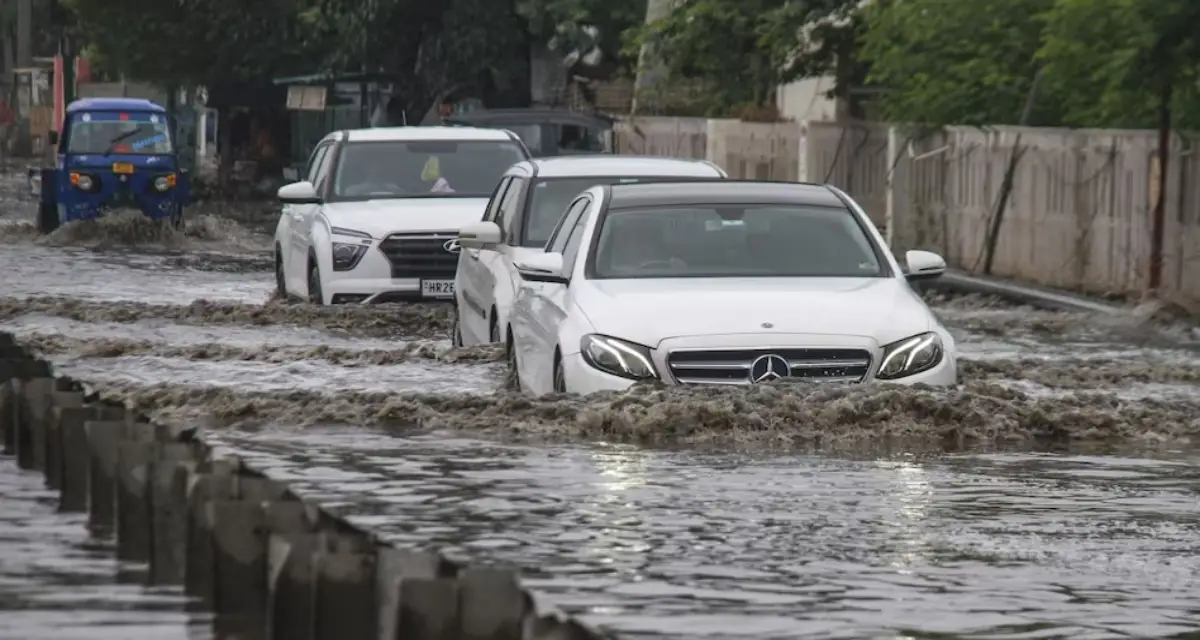
Heavy rain and Floods, will car insurance cover all your flood damage?

Heavy rain and Floods, will car insurance cover all your flood damage?
Indian Monsoons have already arrived in the country. The Climate conditions have been worsening each passing year and as harsh as summers were this year, it is expected that monsoons will be even worse. Reportedly many cities including the capital of India witnessed road blockages and flood roads but the call for concern lies in the fact, If a car is flooded, can it be fixed? More importantly, will car insurance cover the flood damage? Let’s delve into the details of Understanding Flood Damage and Car Insurance
Car insurance can indeed cover flood-related damages, but this depends on the type of insurance policy you have. Only a comprehensive insurance package includes coverage for natural calamities such as floods, earthquakes, cyclones, and fires, as well as man-made issues like theft. Unlike basic third-party insurance, which is mandatory, comprehensive insurance is optional. Therefore, if you live in an area prone to flooding or other natural disasters, it’s wise to opt for a comprehensive insurance plan.
While a comprehensive insurance package covers a broad range of damages, it may not include specific damages to the engine or gearbox. These parts are often the most vulnerable during a flood. To ensure complete protection, it’s crucial to discuss with your insurance provider about possible add-ons that specifically cover engine and gearbox damage. These additional coverages can offer peace of mind and prevent unexpected expenses.
If your car gets flooded, it's essential to act swiftly and follow a structured process to claim insurance. Here’s a step-by-step guide:
Inform Your Insurance Provider: As soon as you discover the flood damage, contact your insurance company immediately. Prompt communication is key to initiating the claim process.
Document the Damage: Take extensive photographs and videos of the damage. This visual evidence is critical for supporting your insurance claim.
Gather Necessary Documents: Collect all essential documents related to your car. This includes a copy of the insurance policy, the vehicle's registration certificate (RC), owner’s details, address proof, and your driver’s license.
Submit the Claim Online: Most insurance companies offer an online claim submission process. Fill out the necessary claim forms and upload the required documents and visual evidence.
Insurance Assessment: Once your claim is submitted, an insurance company representative will contact you to assess the damage. This step is crucial for the approval of your claim and the subsequent compensation.
In Summary, Flooding poses a significant risk to vehicles, especially during the monsoon season. Understanding the scope of your car insurance policy can help you manage these risks effectively. Comprehensive insurance packages offer coverage for flood-related damages, but it’s essential to consider additional protections for your engine and gearbox. In the unfortunate event that your car is flooded, promptly informing your insurance provider, documenting the damage, and submitting an online claim can streamline the process and ensure you receive the necessary support. By being well-prepared and informed, car owners can navigate the challenges posed by natural disasters with greater confidence and security.
Also Read: